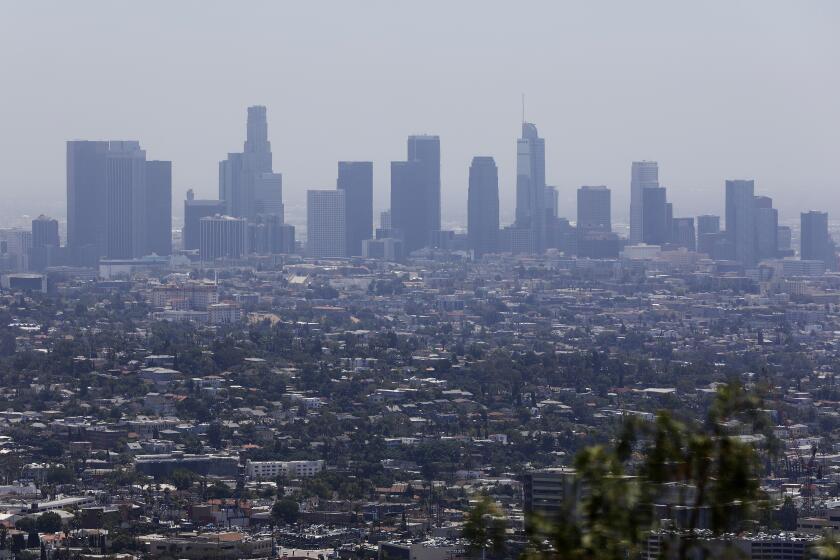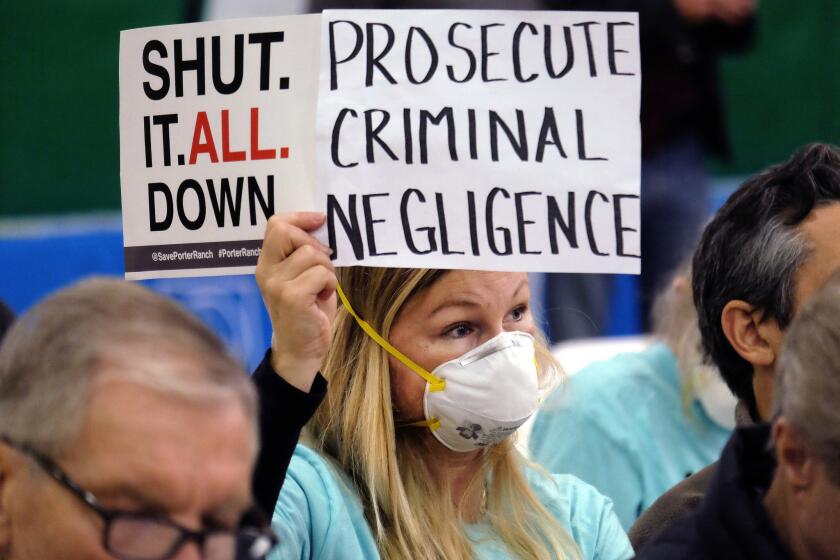How to stop a climate vote? Threaten a ‘no social distancing’ protest
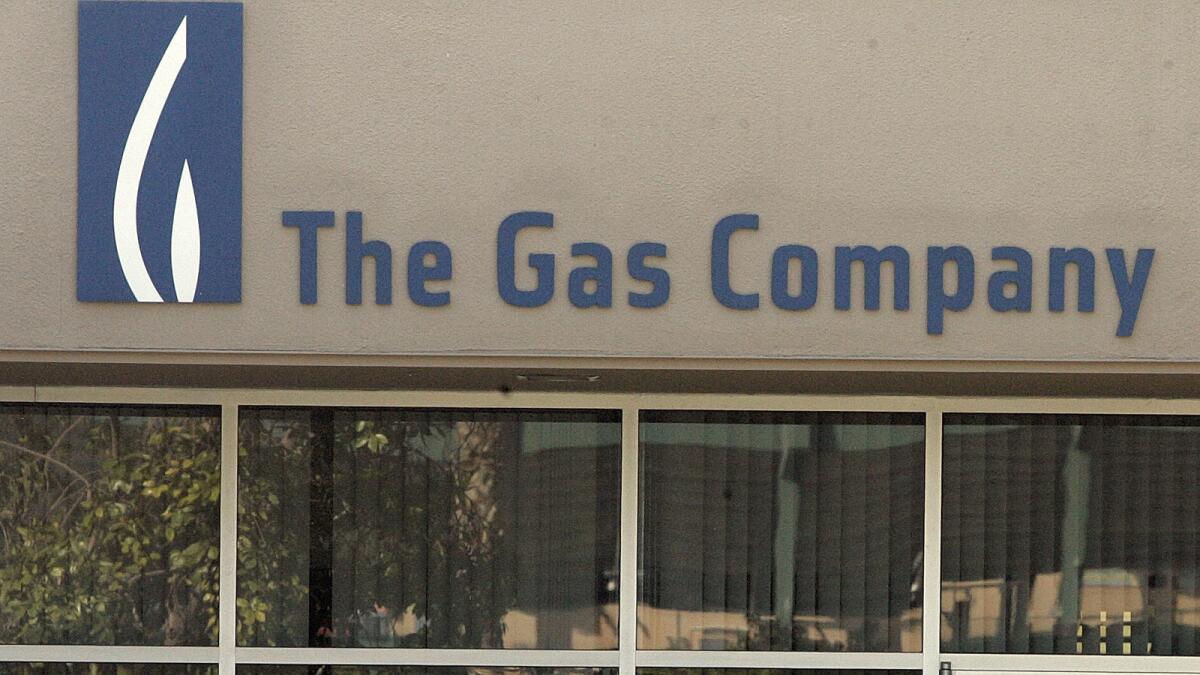
- Share via
San Luis Obispo was on the verge of passing an ambitious climate change policy when the proposal’s most vocal critic, Eric Hofmann, found a trump card: fear of the coronavirus.
Elected officials in this city along California’s Central Coast planned to vote on an energy code that would encourage construction of all-electric buildings, which don’t use gas appliances and aren’t hooked up to the gas grid. It’s an increasingly popular tool for cities looking to phase out fossil fuels — and a threat to the gas industry, which has mounted a vigorous counteroffensive.
On March 16, Hofmann sent an email to San Luis Obispo officials that left them shocked.
“If the city council intends to move forward with another reading on a gas ban I can assure you there will be no social distancing in place,” he wrote. “I strongly urge the city council to kick this can down the road to adhere to public health safety measures. Please don’t force my hand in bussing in hundreds and hundreds of pissed off people potentially adding to this pandemic.”
Your guide to our clean energy future
Get our Boiling Point newsletter for the latest on the power sector, water wars and more — and what they mean for California.
You may occasionally receive promotional content from the Los Angeles Times.
Hofmann is president of Utility Workers Union of America Local 132, which represents thousands of employees of Southern California Gas Co. — one of the nation’s largest gas utilities, and a prominent crusader against local efforts to phase out gas. He also chairs the board of directors of Californians for Balanced Energy Solutions, a pro-gas advocacy group that has received funding from SoCalGas and worked closely with the utility to generate opposition to all-electric building policies.
“We will pull permits and close streets and have a massive protest on April 7th. Now is not the time to do this,” Hofmann wrote. “Please tell mayor harmon and the rest of the council for the sake of people’s health, that their efforts are better focused on how to better deal with this pandemic than to stir up all the emotions of people losing their jobs along with this disease.”
The next week, San Luis Obispo officials scrapped plans for an April 7 vote on the energy code. The vote has not been rescheduled.
The city’s community development director, Michael Codron, attributed the indefinite delay in part to Hofmann’s threat.
“There’s no way to know whether it was bluster,” he said in an interview.
The fight in San Luis Obispo is a particularly intense example of a battle playing out across the state.
More than two dozen California cities have approved policies over the last year banning or discouraging the use of natural gas for space heating, water heating and cooking in new buildings.
Climate activists and many energy experts see transitioning to all-electric buildings as the best way to slash emissions from homes and businesses. Gas is a fossil fuel that contributes to climate change, whereas California’s electricity is increasingly supplied by climate-friendly sources such as solar and wind farms.
SoCalGas has responded by convincing nearly 120 cities and counties to approve similarly worded resolutions, originally drafted by the gas company, calling for “balanced energy solutions.” The company’s climate solution of choice is renewable natural gas — a fuel that could replace some of the fossil gas that contributes to climate change, but which experts say has serious limitations.
Southern California Gas is engaged in a wide-ranging campaign to preserve the role of its pipelines in powering society.
Natural gas workers, fearful for their livelihoods, are on the front lines of the battle.
The Utility Workers Union of America has joined SoCalGas in funding Californians for Balanced Energy Solutions, or C4BES, which critics deride as a front for the gas company. In addition to Hofmann, two other UWUA officials serve on the group’s board.
Separately, a union representing Los Angeles utility workers protested Mayor Eric Garcetti’s decision last year to shut down three gas-fired power plants along the coast. The International Brotherhood of Electrical Workers Local 18 attacked Garcetti over his climate agenda, and briefly used its political influence to hold up the city’s approval of a record-cheap contract for solar power.
Under San Luis Obispo’s proposed energy code, all-electric buildings would be the preferred option for new construction. Developers would still be allowed to build homes and commercial structures that use gas, so long as they retrofit an existing building, or pay a fee to the city to reduce gas consumption elsewhere. Existing homes and businesses would not be affected.
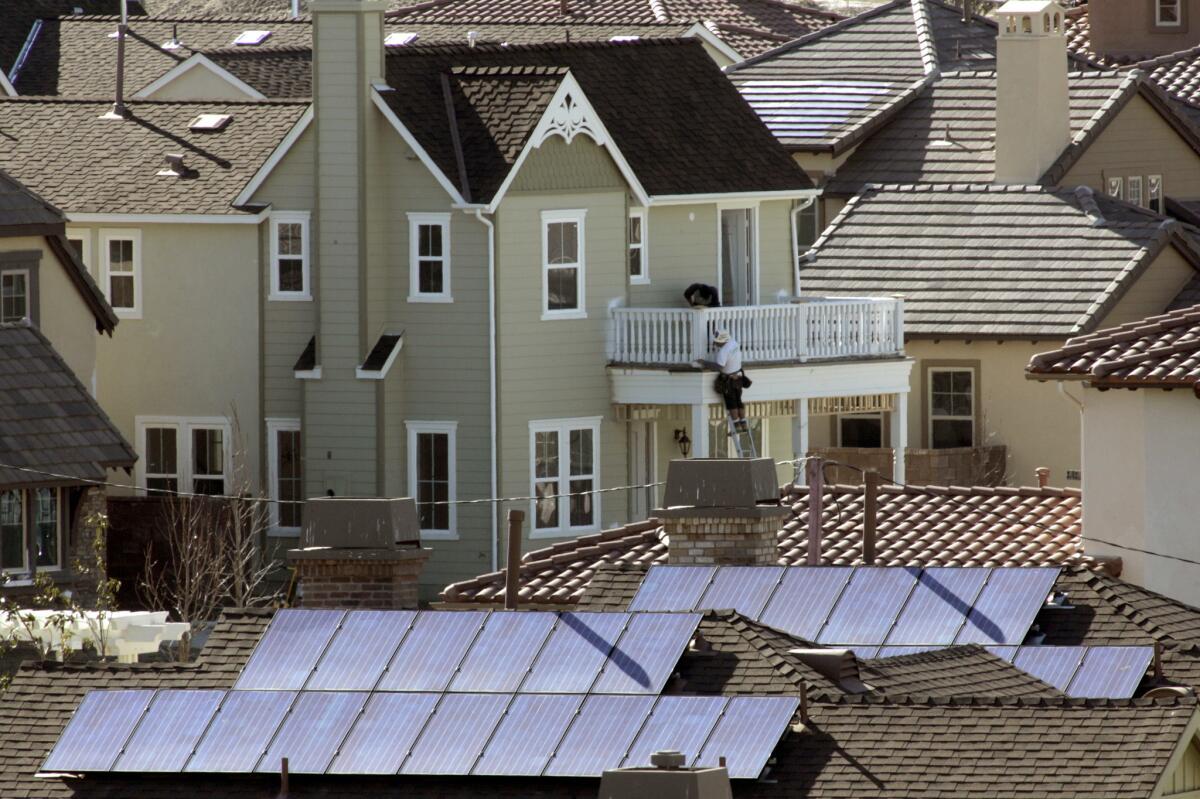
Hofmann described the policy proposal in existential terms. Asked about his March 16 email, he sent The Times a written statement claiming that San Luis Obispo “has made a provocative attack on the livelihood of our members with its anti-gas policy.”
“That has stirred vehement reactions from our members, including mass attendance at past City Council meetings,” Hofmann wrote. “When the City Council announced that it would re-start its anti-gas effort at the April 7th meeting, we thought it best to both organize our members’ attendance in an orderly way, and at the same time try to persuade the City Council to postpone its anti-gas effort to a more prudent time.”
“Fortunately the Council agreed and did so,” he added.
Hofmann also noted that his email “predated the Governor’s COVID-crisis shutdown.”
Gov. Gavin Newsom didn’t issue a statewide stay-at-home order until three days after Hofmann’s email. But Newsom’s office had already announced that public events “can proceed only if the organizers can implement social distancing of 6 feet per person.” San Luis Obispo had reiterated Newsom’s directive, noting that “there will be limited capacity” for attendance at council meetings.
Hofmann’s email was obtained by the Climate Investigations Center, a fossil fuel industry watchdog group, under the California Public Records Act, and shared with The Times. He addressed the message to Codron, copying several other city officials.
Your support helps us deliver the news that matters most. Subscribe to the Los Angeles Times.
San Luis Obispo Mayor Heidi Harmon, a longtime climate activist, said it is “incredibly disappointing and disturbing and concerning to hear that this group is willing to risk our community’s health and safety.” She described Hofmann’s threat as consistent with the fossil fuel industry’s willingness to “continue down this incredibly dangerous path” of heating the planet.
Harmon said she’s sympathetic to gas utility workers fearful of losing their jobs. But she feels strongly that fossil fuels need to stay in the ground, and that government ought to help fossil fuel workers transition to new jobs in the clean-energy economy.
She also pointed to emerging scientific research suggesting that poor air quality makes people more vulnerable to COVID-19.
“All these things are interconnected and interrelated,” Harmon said.
Health and environmental groups say the study is stark evidence of the danger of weakening pollution safeguards during the coronavirus pandemic.
San Luis Obispo’s city council had voted in September to approve the new energy code, after a packed meeting where dozens of people commented for and against the policy, including SoCalGas employees. But before the council could vote a second time — which was required for the policy to take effect — UWUA Local 132 accused council member Andy Pease of a conflict of interest, saying she should have recused herself because she’s a partner in a consulting firm that specializes in energy-efficient buildings.
Pease said at the time that she didn’t believe she had a conflict. And the energy code would have passed even without her vote. But city officials delayed a final vote and asked the state’s Fair Political Practices Commission to review the union’s complaint.
With no answer yet from the FPPC, San Luis Obispo staff decided to bring the energy code back to the City Council in April for a redo of the first vote, with Pease recusing herself. That’s when Hofmann threatened the protest.
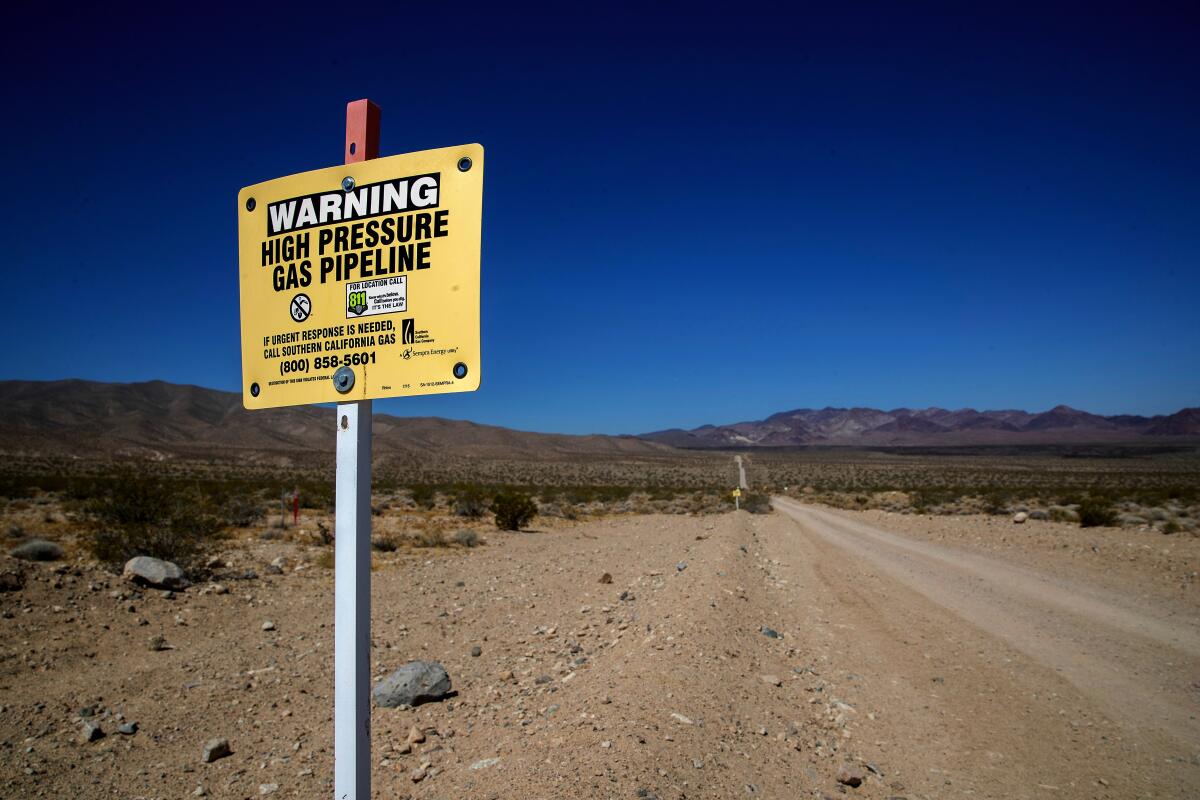
Hofmann, a lead construction tech at SoCalGas, is on a three-year leave of absence from the company due to his union leadership position. SoCalGas said he did not discuss or coordinate his protest threat with company executives or managers.
The company otherwise declined to comment on Hofmann’s email.
“SoCalGas workers are out there on the front lines performing the work needed to safely maintain our infrastructure, while also protecting the safety and well-being of the communities we serve,” gas company spokesman Chris Gilbride said in an email.
Jon Switalski, executive director of Californians for Balanced Energy Solutions, didn’t respond to a request for comment about whether Hofmann discussed or coordinated his threatened protest with C4BES before emailing San Luis Obispo officials.
The SoCalGas-backed advocacy group published a Facebook post March 13 warning that San Luis Obispo “could put in place rules that will make natural gas energy in new and existing buildings too expensive and out of reach for many Californians.”
SoCalGas, meanwhile, continues to face accusations that it has inappropriately used ratepayer funds to fight clean energy policies — potentially including in San Luis Obispo. California Public Utilities Commission staff ruled last week that their ongoing investigation into the utility’s expenditures could include questions raised by the commission’s Public Advocates Office, and by the Sierra Club, about whether SoCalGas has used customer money to lobby against city ordinances promoting all-electric buildings.
The company has been charging California ratepayers for some contributions to pro-natural gas advocacy groups.
The gas company sent a comment letter to San Luis Obispo last year opposing the city’s proposed energy code.
It’s unclear when San Luis Obispo will reschedule the vote. Codron said city officials determined that “having a council meeting with extraordinary participation just wasn’t something that was appropriate to move forward with.” The city recently started hosting digital council meetings open to public commenters, but they’ve been “fraught with technical challenges,” Codron said.
“We’re going to look for the soonest opportunity where the logistics of a meeting of this scope can be managed,” he said.
SLO Climate Coalition chair Eric Veium, who advocated for the new energy code, noted that San Luis Obispo leaders have set a goal of carbon neutrality by 2035 — one of the country’s most ambitious climate targets. He’s confident they won’t back down.
“We will not allow the fossil fuel industry and their front groups to bully us,” he said.
